
MATERIALS EVALUATION
Scope & Guideline
Catalyzing Progress in Engineering Practices.
Introduction
Aims and Scopes
- Non-Destructive Testing (NDT) Techniques:
The journal extensively covers various NDT methodologies such as ultrasonic testing, eddy current testing, radiographic testing, and thermography. These techniques are crucial for evaluating materials and components without causing damage. - Innovations in NDE Technologies:
Research articles often highlight cutting-edge technologies and innovative applications in NDE, including the integration of digital twins, artificial intelligence, and machine learning to improve data analysis and testing accuracy. - Material Characterization:
A significant focus is placed on the characterization of materials, including composites and metals, through experimental and computational methods. This includes studies on porosity, fatigue, and corrosion assessments. - Infrastructure Inspection and Maintenance:
The journal addresses the importance of maintaining and inspecting critical infrastructure such as bridges, railways, and pipelines. It covers advancements in robotic and automated inspection systems that enhance safety and efficiency. - Industry Standards and Practices:
Articles often discuss the evolution and implementation of industry standards, providing guidance on best practices for NDT and NDE across various sectors.
Trending and Emerging
- Artificial Intelligence and Machine Learning:
There is a notable increase in research integrating AI and machine learning into NDT processes, particularly in data analysis and predictive maintenance, enhancing the accuracy and efficiency of inspections. - Digital Twins and Visualization Technologies:
Emerging themes include the use of digital twins and immersive visualization techniques, which facilitate real-time monitoring and predictive analytics in various inspection scenarios. - Robotics and Automation in Inspection:
The application of robotic systems for automated inspections is on the rise, driven by the need for efficiency and safety in challenging environments, such as confined spaces and hazardous materials. - Sustainability and Eco-Friendly Approaches:
Recent papers are increasingly focusing on sustainable practices in NDT and NDE, reflecting a broader industry trend towards environmentally friendly materials and processes. - Advanced Material Characterization Techniques:
There is a growing emphasis on advanced characterization methods, including terahertz spectroscopy and nonlinear ultrasonic testing, to better assess material properties and detect defects.
Declining or Waning
- Traditional Destructive Testing Methods:
There seems to be a waning interest in traditional destructive testing methods as industries increasingly prioritize non-destructive techniques that offer safety and efficiency. - Basic NDT Training and Education:
As the field evolves with advanced technologies, basic training and education in NDT methods appear to be receiving less emphasis, with a shift towards specialized training in AI and digital technologies. - Generalized NDT Applications:
Papers focusing on generalized applications of NDT without specific technological advancements or case studies are becoming less frequent, as there is a growing preference for detailed, innovative, and application-specific research.
Similar Journals
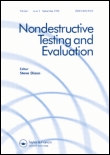
Nondestructive Testing and Evaluation
Empowering Research for Enhanced Material IntegrityNondestructive Testing and Evaluation, published by Taylor & Francis Ltd, is a premier international journal dedicated to the dissemination of innovative research and practices in the field of nondestructive testing and evaluation. With a robust ISSN of 1058-9759 and an E-ISSN of 1477-2671, this journal has consistently served as a vital resource for researchers, professionals, and students interested in enhancing the safety and reliability of materials and structures through advanced testing techniques. The journal's significant impact, evidenced by its Q2 rankings across multiple categories—including Materials Science, Mechanical Engineering, and Physics and Astronomy, along with commendable Scopus rankings—reflects its commitment to high-quality scholarship. Covering the convergence of research from 1989 to 2024, Nondestructive Testing and Evaluation plays a crucial role in advancing methodologies that drive innovation in various engineering disciplines. While currently not offering an Open Access option, the journal remains a respected platform for exchanging knowledge that shapes the future of nondestructive methodologies.

RUSSIAN JOURNAL OF NONDESTRUCTIVE TESTING
Enhancing Safety and Quality Through Innovative Testing ApproachesRUSSIAN JOURNAL OF NONDESTRUCTIVE TESTING, published by PLEIADES PUBLISHING INC, is a respected academic journal that has been contributing significantly to the fields of Condensed Matter Physics, Materials Science, Mechanical Engineering, and Mechanics of Materials since its inception in 1996. With a concentrated focus on the latest advancements in nondestructive testing techniques, it serves as a vital resource for researchers, engineers, and practitioners seeking to improve material integrity and safety across various applications. Despite its classification in the Q3 quartile categories, the journal continues to foster scholarly dialogue and innovation in non-destructive research methodologies. Although it does not currently offer open access, the journal remains committed to disseminating high-quality research that influences both theoretical and practical landscapes. With an emphasis on quality, the journal seeks to connect academics and industry experts alike, thus enhancing the relevance and application of nondestructive testing in real-world contexts.
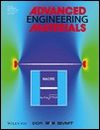
ADVANCED ENGINEERING MATERIALS
Fostering Dialogue Between Academia and IndustryADVANCED ENGINEERING MATERIALS is a leading journal dedicated to the field of materials science, particularly within the realm of condensed matter physics. Published by WILEY-V C H VERLAG GMBH in Germany, this esteemed journal has been a crucial platform for disseminating cutting-edge research since its inception in 1999. With an impressive impact factor and ranked in the top quartiles of its categories, it boasts a Q1 ranking in Condensed Matter Physics and a Q2 rank in related materials science fields as of 2023. ADVANCED ENGINEERING MATERIALS serves a diverse readership, including researchers, industry professionals, and students, striving to advance the understanding and application of innovative materials. Frequent contributions to this journal help bridge theoretical advancements with practical applications, fostering a vibrant academic and industrial dialogue. Although currently not an open-access journal, the insights shared within its pages are pivotal for anyone engaged in the dynamic sectors of engineering and material sciences.
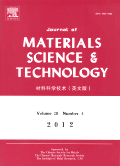
Journal of Materials Science & Technology
Pioneering Insights for Tomorrow's MaterialsThe Journal of Materials Science & Technology, published by JOURNAL MATER SCI TECHNOL in China, is a leading forum for the latest research in the multidisciplinary field of materials science. With the ISSN 1005-0302 and E-ISSN 1941-1162, this esteemed journal boasts an impressive impact factor and has established itself as a vital resource for professionals, researchers, and students alike. Covering a wide range of topics, including ceramics, composites, materials chemistry, mechanical engineering, and polymers, it has achieved a coveted Q1 ranking in multiple categories as of 2023, reflecting its position in the top tier of scholarly publications. Notably, the journal excels in its Scopus ranks, placing within the top 5% in categories such as Metals and Alloys and Mechanical Engineering. Aiming to foster knowledge and innovation in material development and application, the journal is committed to facilitating groundbreaking research and collaborations that propel the field forward. With its convergence of insights from 1993 to 2025, the Journal of Materials Science & Technology remains an indispensable resource for the advancement of materials science.
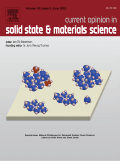
CURRENT OPINION IN SOLID STATE & MATERIALS SCIENCE
Elevating discourse in solid-state advancements.CURRENT OPINION IN SOLID STATE & MATERIALS SCIENCE, published by Pergamon-Elsevier Science Ltd, is a premier journal in the field of materials science that offers critical insights into the latest advancements and trends in solid-state materials. With an impressive impact factor and a 2023 ranking in the top quartile (Q1) for materials science, this journal provides a platform for researchers, professionals, and students to explore and disseminate high-quality research findings. The journal covers a broad range of topics, encouraging interdisciplinary dialogue among scientists and engineers. While currently not available as open access, its rigorous selection process ensures that only the most impactful and relevant studies are published. Since its inception, CURRENT OPINION IN SOLID STATE & MATERIALS SCIENCE has established itself as an essential resource for anyone involved in the field, facilitating the rapid exchange of knowledge that is vital for advancing material innovations.
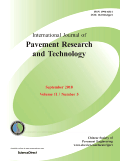
International Journal of Pavement Research and Technology
Unveiling the science behind resilient pavement solutions.The International Journal of Pavement Research and Technology, published by SpringerNature, stands as a leading platform in the realm of civil and structural engineering, focusing on critical advancements in the field of pavement research. With an ISSN of 1996-6814 and an E-ISSN of 1997-1400, this journal serves an international audience dedicated to enhancing pavement technologies, materials, and practices. Recognized for its rigorous standards, it holds a commendable 2023 Q2 ranking in both Civil and Structural Engineering and Mechanics of Materials, showcasing its influence and relevance in these specialized areas. The journal has been actively publishing since 2009 and continues to explore innovative solutions while addressing pressing challenges in pavement engineering. Although currently not an open-access platform, the findings published within its pages are pivotal for researchers, engineers, and students striving to advance the science and technology of pavement systems. With an emphasis on quality and a commitment to the progress of engineering practices, the journal is an essential resource for those engaged in this dynamic field.
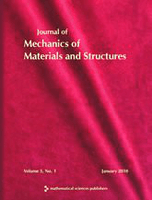
Journal of Mechanics of Materials and Structures
Fostering Academic Excellence in Material Behavior Research.Journal of Mechanics of Materials and Structures, published by Mathematical Science Publishers, is a distinguished periodical in the field of Applied Mathematics and Mechanics of Materials. With the ISSN 1559-3959, this journal has been a pivotal platform since its inception in 2006, providing insights and advancements in the mechanics of materials and their structural applications. Operating out of the University of California, Berkeley, this journal not only boasts a respectable standing within its categories, ranking Q4 in Applied Mathematics and Q3 in Mechanics of Materials as of 2023, but it also serves a crucial role in fostering academic discourse among researchers, practitioners, and students alike. Although it does not currently offer open access, its contributions to the respective fields are invaluable, underscoring the relevance and importance of continued research in understanding material behavior and structural integrity. Whether investigating theoretical frameworks or engineering applications, the Journal of Mechanics of Materials and Structures remains an essential resource for anyone dedicated to the advancement of the science of materials and structures.

SENSORS AND MATERIALS
Connecting Research and Innovation in Sensors and MaterialsSENSORS AND MATERIALS is a pivotal academic journal dedicated to the dissemination of research in the fields of instrumentation and materials science. Published by MYU, SCIENTIFIC PUBLISHING DIVISION in Japan, this open-access journal has been fostering innovative research since its inception in 1996. With an ISSN of 0914-4935, it serves as a platform for the scholarly communication of studies that intertwine the developments in sensor technology and materials engineering. As of 2023, it occupies a respectable position in the category quartiles, ranking Q3 in both Instrumentation and Materials Science (miscellaneous), reflecting its commitment to quality research. The journal's Scopus rankings further highlight its relevance, being placed at Rank #317 in General Materials Science and Rank #105 in Instrumentation. With its open-access model, SENSORS AND MATERIALS ensures widespread availability of cutting-edge research that is critical for researchers, professionals, and students engaged in advancing the fields of sensor technologies and material innovations.
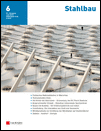
Stahlbau
Fostering Dialogue Between Theory and Practice in Engineering.Stahlbau is a prestigious journal published by ERNST & SOHN, focusing on the intersection of materials science, civil engineering, and mechanical engineering. With its roots dating back to 1968 and extensive coverage through 2024, this journal serves as a vital platform for the dissemination of innovative research and insights in the fields of Building and Construction, Civil and Structural Engineering, and Advances in Metals and Alloys. Despite its categorization in the Q3 quartile across several disciplines, it is recognized for its rigorous peer-reviewed articles and its commitment to advancing knowledge in structural engineering and materials' performance. The journal aims to foster a dynamic dialogue among researchers, industry professionals, and students, making it an essential resource for anyone looking to stay at the forefront of developments in construction and materials engineering. Access options reflect a commitment to intellectual exchange in academia, emphasizing the journal's role as a cornerstone for emerging research and best practices.

Bridge Structures
Building Knowledge Bridges in Structural EngineeringBridge Structures is an esteemed academic journal dedicated to the field of structural engineering, particularly focusing on the design, analysis, and maintenance of bridge systems. Published by IOS PRESS, a reputable publisher known for its contributions to various scientific fields, the journal serves as an integral platform for disseminating innovative research and advancements within the domain. With an ISSN of 1573-2487 and an E-ISSN of 1744-8999, Bridge Structures has established itself over the years—covering contributions from 2005 to 2024. The journal has attained a commendable ranking within the Q3 category in Building and Construction and holds a position within the 28th percentile among its peers according to the Scopus rankings. Though the journal operates on a subscription basis, its commitment to advancing engineering knowledge is paramount, making it essential reading for researchers, practitioners, and students eager to deepen their understanding of bridge engineering. The journal not only explores theoretical advancements but also emphasizes practical applications, providing a well-rounded perspective on current challenges and solutions in the field of bridge structures.